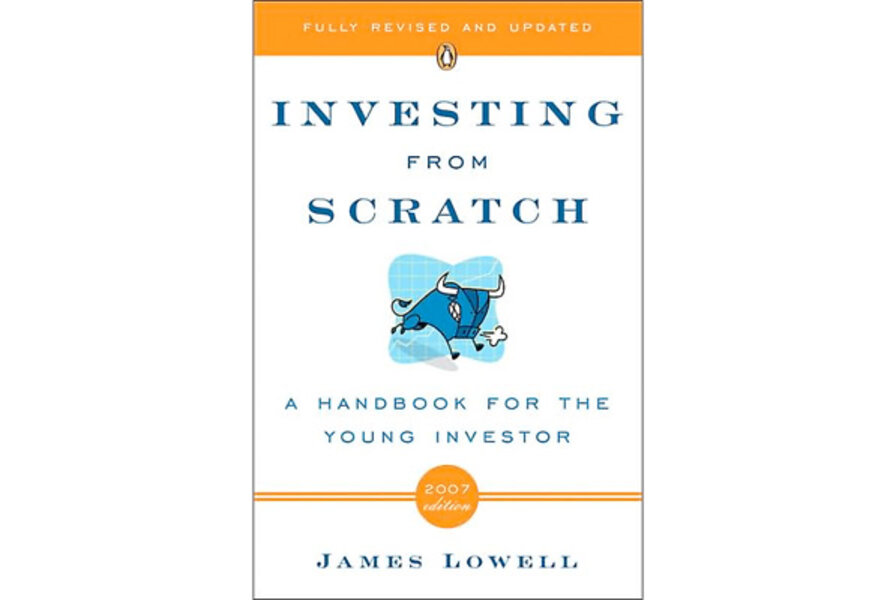Book review: 'Investing from Scratch: A Handbook for the Young Investor'
Loading...
Every Sunday, The Simple Dollar reviews a personal finance book or other book of interest.
This is one of those books I found digging through the personal finance section at the library. The subtitle, A Handbook for the Young Investor, intrigued me.
How would this book particularly tackle the issues of the young investor? Would it take the almost-too-simplistic approach of the still worthwhile How to Invest $50-$5,000? Or would it take the opposite approach by almost overwhelming the reader with good information, like The Bogleheads’ Guide to Investing?
The author, James Lowell, seems to ride down an area in the middle with this book. It makes a few assumptions of the reader (that they want to know what things are, not just where to stick their money), but it also sticks to the strong basics of investing advice.
A Primer on Your Future Well-Being
Investing from Scratch opens with what I consider to be a big reality check. Lowell is pretty clear to readers that if you’re young, you should not count on Social Security as part of your retirement planning and that you have to start doing it yourself. Furthermore, if you start doing it now, it’ll be far easier on you than if you put off doing it until later.
Lowell couples this with a number of short but powerful pieces. One is an essay setting goals for yourself, not only in the long term, but in the short term as well. Another focuses on the value of having your own filing system, as well as how to get started on doing that.
Selecting the Best Markets Is Essential to Your Overall Investment Success
At first, I expected this section of the book to focus heavily on speculative investing, but that’s not what was covered at all. Instead, the chapter focused on selecting a good bank and a lengthy discussion of the idea of risk (including what I consider to be the biggest investment risk of all: you).
This is counterbalanced by explaining what exactly a market is no matter what the investment type is. Simply put, you can’t sell something without someone wanting to buy it at that price, and you can’t buy it at your price unless someone is willing to sell it at that price.
Know the Basics Before You Invest
Here, Lowell focuses on actually explaining what various types of investments are rather than just saying “invest in X” or “invest in Y.” He covers what a stock really is, and similarly covers what exactly a treasury note is and what a bond is.
What value does that have? All of this material ties into the overall theme of risk and reward. Almost always, you have to take on more risk to have the potential for more reward over the long term. Each investment type is placed against that context, with low-risk and low-reward investments (like a savings account) compared to high-risk and high-reward investments (like international stocks).
Smart Investing Moves You Can Make
How exactly do you invest? Lowell spends the next section explaining what exactly a broker is – someone who helps buyers find sellers and vice-versa, for a fee, of course – and how exactly you can maximize the value you get from a broker. He also talks about other methods for learning more about investing, such as investment clubs.
Lowell also offers up a few specific investment strategies, such as dollar cost averaging. His tactic is usually to write just enough so that you get the basic idea, but you’re encouraged to look elsewhere to find deep details on specific tactics.
Your Future Is in Your Hands
The remainder of the book focuses on the future, mostly on retirement, but a bit on family investing, too. Lowell spends quite a lot of time comparing and contrasting various retirement accounts without directly concluding what the “best path” is, although he seems to acknowledge the general plan that many personal finance books and websites suggest: put money in your 401(k) up to the match, then max out your Roth IRA.
Is Investing from Scratch Worth Reading?
As with many personal finance books, it offers the perfect advice to a pretty narrow audience. I would describe the perfect reader of this book as being someone who is less than fifteen years out of college and is actually aware enough of the need to spend less than they earn that they’re actually practicing it in their life. They should also be in a stable enough financial situation that they actually have the financial capacity to invest in a meaningful way beyond 401(k) contributions.
If that sounds like you, then you’ll find a great deal of value in Investing from Scratch. If that doesn’t sound like you, much of this book will miss the mark.
For example, if you’re in the right age range but are having difficulty getting your spending under control, a great book to read instead of this one would be You’re So Money by Farnoosh Torabi. Or, if you’re particularly focused on building a career above all else, Automatic Wealth for Grads by Michael Masterson might be a better choice. There are lots of options – go for this book only if you match that description above.
Add/view comments on this post.
------------------------------
The Christian Science Monitor has assembled a diverse group of the best economy-related bloggers out there. Our guest bloggers are not employed or directed by the Monitor and the views expressed are the bloggers' own, as is responsibility for the content of their blogs. To contact us about a blogger, click here. To add or view a comment on a guest blog, please go to the blogger's own site by clicking on the link above.





